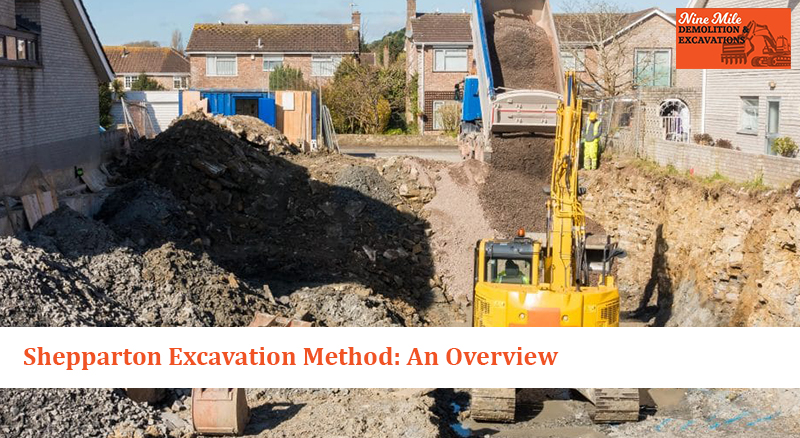
Shepparton Excavation Method: An Overview
- by Admin
- 26 Aug 2022
The process of Shepparton excavation involves several advanced mechanisms. Deploying the right set of tools and excavation techniques, professional engineers carry out the construction process. In this post, you will get to know different excavation methods and their respective uses. Of course, several factors influence the choice of excavation methods in Shepparton. These include the overall construction budget, availability of equipment for construction, site area, type of foundation of adjoining structures and so on.
Sloped full open cut: This method is economically more viable, as the side of the area of excavation would be sloped. Therefore, holding the wall of the foundation does not require any support. However, the process would become costly if the excavation is relatively deep or the slope is gentle.
Cantilever full open cut: In this process, a support is necessary to hold the foundation wall. This prevents it from collapsing.
In order to counteract against the pressure of the earth, the anchored Shepparton excavation method is deployed. It involves the deployment of anchors. These anchors have a bound portion, from where the anchoring force comes, working against the pressure of the earth. On the other hand, the anchor has an unbounded portion. The pressure is transferred to the anchored head through this part. Again, the anchor head takes the load to the retaining wall. The soil strength largely determines the anchoring force. This method is good in excavating extensive areas with shallow depth. In the bracing method, horizontal struts have to be placed before the retaining wall. This helps in holding the material pressure against the excavation wall. This mechanism involves the use of sturt, wale, end braces, corner braces and center poles. The pressure of the earth is transferred using wakes to the horizontal struts. On the other hand, the end and corner braces minimize the wale span. However, the strut number remains limited. Center poles are also used in the system, that prevents the struts from failure as a result of their own weight. In the zoned excavation method, diaphragm walls are used to create a retaining wall. The longer span wall has a longer deformation, as compared to the short span wall. The engineers divide the area of excavation into small zones to minimize the deflections of the longer span walls. This, eventually, decreases the wall settlement and wall deformation. This method involves digging up the center of the area of excavation. The excavated material is positioned near the retaining wall, which creates a slope. The central area of the excavation has a major structure over it. After that, the engineers excavate the sloped soil and places the struts between the main structure and the retaining wall. In order to construct the other parts of the structure, the engineers remove the struts. Apart from the excavation methods mentioned in this post, you have other categories like top-down excavation. Based on the specific conditions, budget, and other requirements, engineers deploy these methods of excavation.


